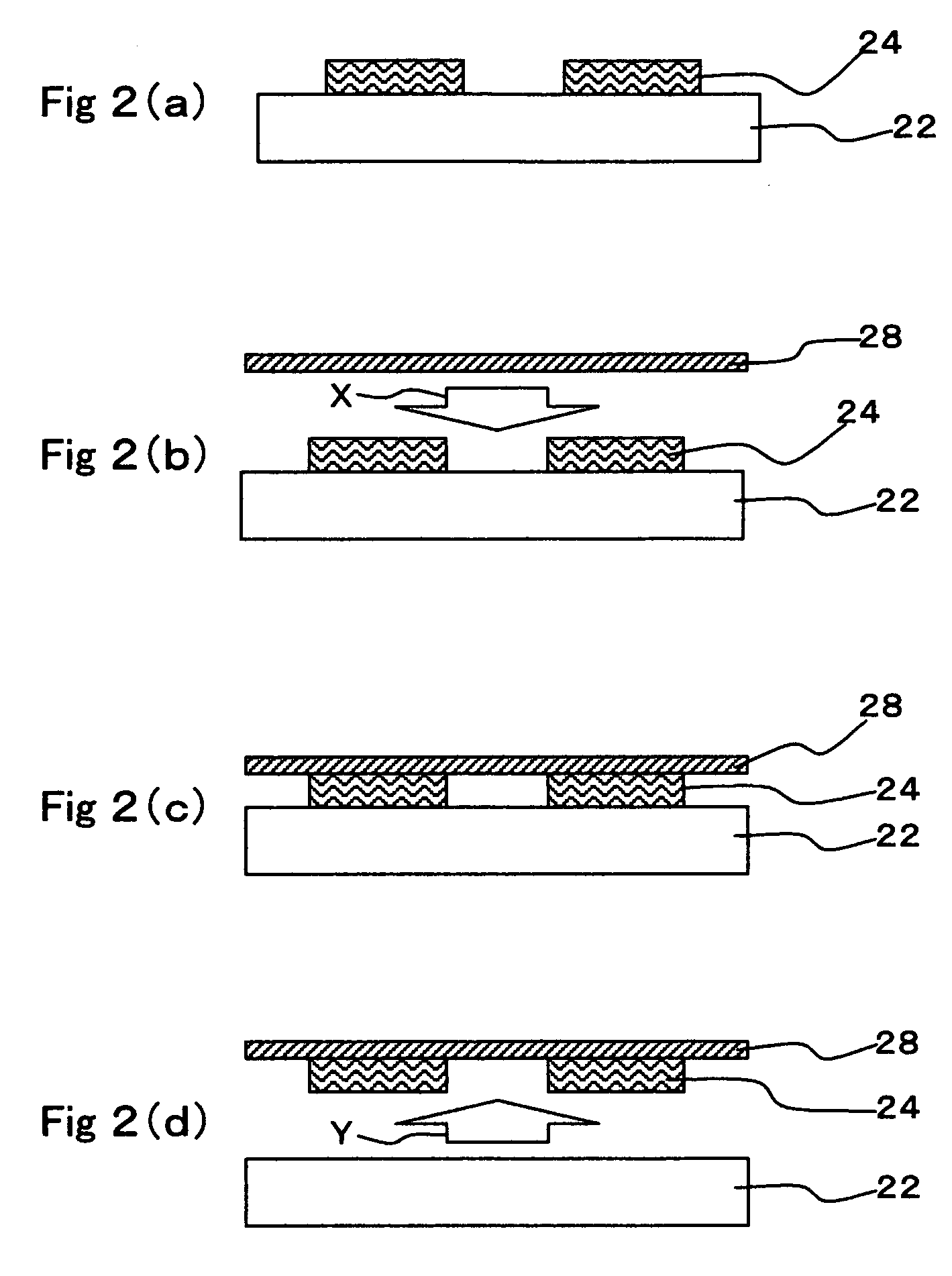Carbon nanotube device, process for producing the same and carbon nanotube transcriptional body
- Summary
- Abstract
- Description
- Claims
- Application Information
AI Technical Summary
Benefits of technology
Problems solved by technology
Method used
Image
Examples
example 2
[0307] As shown in FIG. 10, an LED (manufactured by Stanley Electric Co., Ltd., DB1111C) 32 was mounted onto the carbon nanotube structure layers 14 (opposing end portions of 14a and 14b in FIG. 9) functioning as electrodes in the carbon nanotube device obtained in Example 1 with silver pastes 34a and 34b.
[0308] In addition, a lead wire (not shown) to be connected to a power supply device (not shown) was connected to the other end portions of the carbon nanotube structure layers 14a and 14b with silver pastes 34c and 34d, and the resultant was provided as an electrode terminal, thereby obtaining a carbon nanotube device of Example 2. Here, FIG. 2 is an enlarged plan view of the surface of the carbon nanotube device of Example 2.
[0309] A voltage was applied to the electrode terminal with the power supply device, with the result that the LED 32 lighted up at 3.3 V. The result confirmed that circuit formation was performed.
example 3
[0315] A carbon nanotube device was manufactured according to the flow of the method of manufacturing a carbon nanotube device shown in FIG. 2 (applied example). In some cases, reference numerals in FIG. 2 are used in the description of this example.
(A) Applying Step, (B) Cross-linking Step, and (C) Patterning Step
[0316] The operations of (A) Applying Step, (B) Cross-linking Step, and (C) Patterning Step were performed in the same manner as in Example 1 to prepare a product in a state shown in FIG. 2(a). In this example, the silicon wafer used in Example 1 corresponds to the temporary substrate 22, and a product formed in a predetermined pattern (shape of the carbon nanotube structure layer 14 of FIG. 9) on the surface of the temporary substrate 22 corresponds to the carbon nanotube structure layer 24.
(D) Transferring Step
[0317] In the silicon wafer on which the carbon nanotube structure layer 24 had been formed, an adhesive surface of an imide tape (available from Permacel, 1...
PUM
 Login to View More
Login to View More Abstract
Description
Claims
Application Information
 Login to View More
Login to View More - R&D
- Intellectual Property
- Life Sciences
- Materials
- Tech Scout
- Unparalleled Data Quality
- Higher Quality Content
- 60% Fewer Hallucinations
Browse by: Latest US Patents, China's latest patents, Technical Efficacy Thesaurus, Application Domain, Technology Topic, Popular Technical Reports.
© 2025 PatSnap. All rights reserved.Legal|Privacy policy|Modern Slavery Act Transparency Statement|Sitemap|About US| Contact US: help@patsnap.com



